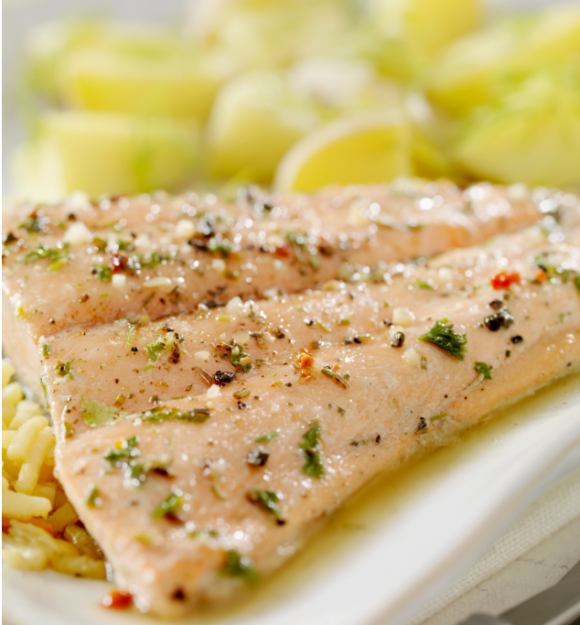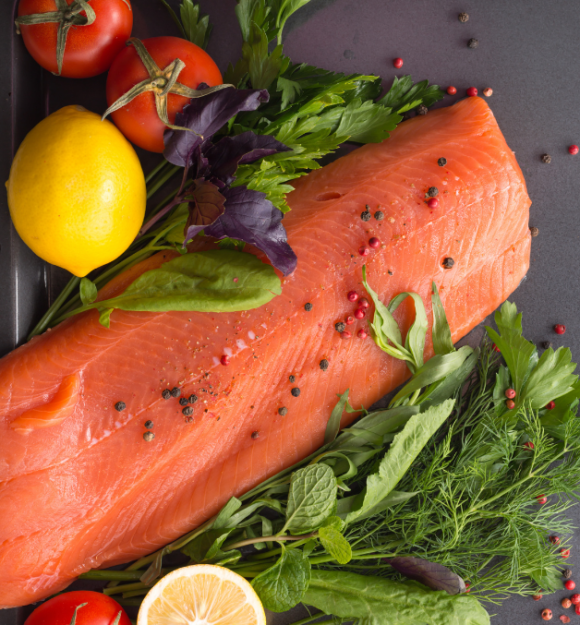Salmon is not only a tasty treat but has lots of health benefits. This fatty fish is rich in omega-3 fatty acids which is good for your heart, protein, B vitamins, Vitamin E, and even antioxidants. Salmon is a heart-healthy favorite, easily available, and versatile. There are many different ways you can prepare salmon. Today we want to share a few easy ways to cook salmon fillets.
So whether you’re hosting a dinner party, cooking for your family, or just want something healthy and delicious for yourself. You have options for cooking salmon fillets. The salmon cooking techniques we’re sharing today are easy to prepare and always come out so delicious. We recommend trying Oshen Salmon for your next meal prep.
Hopefully these salmon cooking methods break the idea that salmon is reserved only for special occasions and restaurant dinners. Instead, salmon should become a staple in your home cooking rotation. Also, keep in mind that all of these methods are subject to your personal twist. So you can use these cooking methods for any of your desired seasonings, flavors, or rubs. Here are a few easy ways you can cook salmon in the comforts of your home.
8 Ways To Cook Salmon Fillets
Pan-fried
A quick and easy way to cook salmon is to pan-fry it. You only need a little salt and pepper to taste and a little melted butter or olive oil.
In a skillet, over medium-high heat, fry salmon starting with the skin-side up. Let the fillet sizzle for about 5 or 6 mins. Turn it, skin-side down using a wide spatula and cook for 3 mins. Season with a little salt and pepper. Add a little squeeze of lemon and it’s good to go.
Roasted
Another easy recipe is roasted salmon in the oven. Salmon cuts best for roasting are sides and fillets.
Preheat your oven to 425 degrees F. Season salmon fillets with salt and pepper or add other spices and herbs . On a lightly greased sheet pan, place salmon skin-side down then bake in the preheated oven for about 12 to 15 mins. Watch the cook time closely to avoid overcooking your fish. No need to turn the fish over. Top your baked salmon with your favorite sauce or a squeeze of lemon.
Broiled
Another oven baked salmon recipe is broiled salmon. Sides and fillet cuts are best broiled.
Set your oven setting to broil. Season salmon however you want and place it in the oven on a sheet pan. Check after 3 minutes if the fish is cooked. Salmon is also deliciously broiled with white wine and herbs.
Grilled
This method is honestly SO easy. Our favorite thing about this method is the smoky flavor the grill adds to the fish.
Get your grill hot before cooking. Prepare salmon by brushing with oil and your desired seasoning or rub. The oil is key to prevent sticking to the grill. Also, make sure your salmon is pre cut into your desired serving or plating size. This will make it much easier to flip so that you’re not trying to flip a larger piece of fish. Flip it after 5 minutes. When your fish becomes flaky, it’s chow time.
Pan Seared
You’ll need a large skillet. Heat the skillet to medium head for a few minutes to warm it up. Grab the piece of salmon and coat it with olive oil. Then place it on the skillet. Bring the temperature up to high so that you can get that crisp on the bottom of the fish.
Be careful not to overcook the fish, you need to watch it. Cook for three – four minutes, then flip over and cook for another 3 – 4 minutes. You want the fish crispy on the outside, tender on the inside. Don’t forget to add your seasonings. You can do this before you add the fish to the skillet or during. Then serve your fish with any sides or additional seasonings.
Poached
If you want your salmon recipe fat-free, you can have your fillets poached. Simmer your salmon fillets in water. The water should cover the fish. Use eight a straight sided skillet or heavy pot. On simmer, cook the fish until it becomes opaque, or for about five minutes depending on the thickness of your cut. You can add any flavors or vegetables to the water to cook into the fish through poaching.
For something super easy and basic you can poach it with a pinch of salt, pepper, a garlic, parsley, and a squeeze of lemon once it’s done. You can also use white wine or chicken stock to add more flavor. Make sure there is enough water to cover the fillets.
Baked in Foil Method
We love the foil method because your salmon always cooks perfectly. The basic principle is that you wrap your salmon and desired flavors in foil so that it all cooks together and creates a little flavor steam for your fish.
So bust out the foil and your desired ingredients and a baking dish or baking sheet. Preheat your oven to 400. You’ll use individual pieces of foil for individual pieces of fish to fully wrap the fish. On the bottom of the foil, use olive oil or butter to prevent sticking. Add any desired flavors too such as lemon, chicken broth or desired seasoning.
Place the fish on top of the oils & seasoning. Then you can also place more flavors on top. We recommend lemon, garlic, & dill for super basic, healthy, and delicious flavor. You can also add lemon slices and zest. Wrap the salmon to completely seal the fish inside. Bake the fish for 15 – 20 minutes.
Salmon en Papillote
Sounds difficult? Nah, it’s just French for “wrapped up in parchment”. The method is still quite simple.
If you are using vegetables, slice thinly and layer them with the longest-cooking veggies at the bottom. Place salmon fillet on top then sprinkle with salt and pepper. Add dried herbs and lemon slices for a more flavorful taste. Close the parchment paper and bake for 12 to 15 minutes at 400 degrees F, depending on the vegetables used and how well done you like your salmon. Unwrap the packets to avoid overcooking of the fillets.
Salmon Cooking Tips
The salmon quality is everything.
So make sure you’re buying the most high quality, nutritious fish at the grocery store. You can learn more about how to find nutritious salmon at the grocery store here.
How to choose your salmon size
When buying salmon fillet cuts, ask for those with almost the same sizes. This way, your salmon fillets will cook evenly. Large fillets which are not individually cut are called sides. They are best for broiling or grilling and can serve a bigger group. Salmon is also sold in steak cuts which have uniform thickness, perfect for grilling.
Store your salmon properly.
Salmon needs to be stored properly in order to keep its freshness. So read about proper storage of salmon so you can make sure the salmon you’re eating is safe and tasty.
Before you start cooking keep in mind:
Frozen salmon must be defrosted fully before cooking. Before adding salmon fillets to the pan, make sure the fish is dry. Pat dry the salmon with paper towels. Wet salmon is more likely to stick to the pan and will not crisp quite as nice. Make sure your skillet is hot before frying your salmon. Keep your pan in medium to medium high heat only.
Know when to leave skin on:
When frying or grilling your salmon, don’t take the skin off. It serves as a safety layer between the fish and the hot pan or grill. Also, it’s easier to flip your fish over with the skin fried or grilled first. However the best reason for leaving the skin on when frying salmon is because—it’s so tasty! Take the skin off your salmon fillet when poaching or slow-roasting. It makes it more buttery and less rubbery.
Is your salmon fully cooked?
To know when your salmon is done, poke the center of the fillet with a fork and see if it is flaky. Be careful not to break the fish or it will not look as nice plated. You can also use a cake slicer. Simply slide it into the fish and create enough of an opening to look inside. If it looks cooked salmon; you’re good to go. If it needs a little bit more time you can do that too.
How to add more flavor to your salmon:
You can always find ways to incorporate flavor into your recipes no matter which method you’re using. Spices and herbs are always a great option. We also love citrus, teriyaki, dill sauce, soy sauce, nuts, honey, and brown sugar.
Try some of our favorite salmon fillet recipes:
We’ve been collecting the best salmon recipes from across the web. You can check them out on our Pinterest.



